It is essential to dress well in the challenging climate of the Tibetan Plateau, but dressing well in Tibet is more than just staying warm. Over the centuries, traditional fashion in Tibet has evolved into practical and beautiful clothing. Understanding how people dress is an important part of learning about the way of life there. To help you appreciate what you’ll see during your time there, here are 9 features unveiling the dressing culture in Tibet.
1. The Tibetan robe is the most common type of traditional Tibetan clothing.
The most common type of traditional Tibetan clothing is the iconic ‘chuba’ or ‘chupa’. It is a robe well adapted to the local climate and lifestyle. A chuba robe is very recognizable with its loose flowing silhouette, long sleeves, and wide ankle-length hem. Made from durable materials such as wool or silk, they provide protection against cold while being loose enough for people to work on their daily tasks or cross rugged terrain.
Tibetan robes are almost always decorated in regional styles or personal preferences. They are normally made in vibrant colors and with intricate patterns deeply symbolic in Tibetan culture. These patterns are painstakingly embroidered into the fabric with motifs representing nature, religion, or historical significance. Chuba are worn during festivals and ceremonies and in everyday life. Their blend of practicality and cultural expression makes them an important symbol of the Tibetan People.
2. Various accessories are essential when wearing Tibetan clothing.
Tibetan people enhance their clothing with a wide range of accessories. Like many elements of Tibetan culture, these accessories serve as expressions of culture and have important practical uses. One typical example is the ‘zhalu,’ a colorful woven belt. A zhalu is worn around the waist and helps to secure Tibetan robes for a tailored fit. Usually made from silk or wool, these belts are often very colorful, adding some personal style to the ensemble.
Tibetan jewelry is also worn as an important expression of the culture. Materials like silver and turquoise are commonly used to make necklaces, earrings, and bracelets worn by both men and women. It takes skilled craftsmanship to create the intricate designs such as the wheel of life or Tibetan Om that give the jewelry its cultural significance.
 Our clients wear traditional Tibetan dress for photography.
Our clients wear traditional Tibetan dress for photography. 3. Tibetan clothing differs between Tibetan farming and pastoral areas.
Differences in Tibetan clothing reflect the different lifestyles and climates in farming and pastoral areas. Farming communities are usually in areas with milder climate and less rugged terrain. People in these areas wear lighter garments decorated with patterns and elements celebrating agricultural traditions. Chuba robes are still common but are often made from more lightweight materials such as cotton.
In pastoral areas, clothing is made to be warm and durable. Their robes are often made from heavy wool to keep them warm in the high-altitude regions. Pastoral clothing also includes more fur-lined accessories such as boots or coats. These are needed for extra protection from the cold while tending to livestock in the mountainous regions.
 Tibetan clothing is made to be warm and durable in farming areas.
Tibetan clothing is made to be warm and durable in farming areas.4. Tibetan clothing is designed to keep one warm and comfortable, considering the climate of the plateau.
The Tibetan plateau can see extreme weather. Clothing is carefully crafted to keep people warm and comfortable in the challenging environment. The chuba robe is designed so that clothing can easily be layered underneath. The layering creates a natural insulation barrier by trapping air close to the body and protects against the freezing cold.
Common accessories include fur-lined hats, woolen scarves, and thick boots. They have all added to the distinctive dressing culture of the region and the popular image of Tibetan fashion. At the same time, they are crucial for survival in the outdoors of the plateau.
5. Tibetan clothing for women varies before and after adult rites and marriage.
The cultural customs of Tibet see women’s clothing go through distinct changes in different stages of life. Before adulthood, Tibetan girls wear bright, colorful dresses intricately embroidered with playful patterns. This changes into a more conservative style after the adult rites and marriage.
Married women wear more modest and subdued clothing. The bright colors are toned down, and there are less decorative elements. This is meant to symbolize the maturity and responsibility that come with adult life.
 Tibetan clothing for women varies in ages.
Tibetan clothing for women varies in ages.6. Different sects of Tibetan lamas wear different colors of clothing.
Many different schools of Tibetan Buddhism thrive in the Tibetan region. Their distinctive beliefs and practices are also reflected in the clothing they wear. The Gelugpa sect is recognized by the vibrant saffron-colored robes worn by its monks. This tradition includes the Dalai Lama and many other prominent Tibetan leaders, and the color of their robes symbolizes the pursuit of wisdom.
The Kagyu tradition emphasizes meditation and spiritual realization. This is symbolized by their deep maroon robes representing the discipline of their practice. Within the Sakya tradition, monks wear gray-colored robes. This is meant to represent their focus on pragmatism and scholarship.
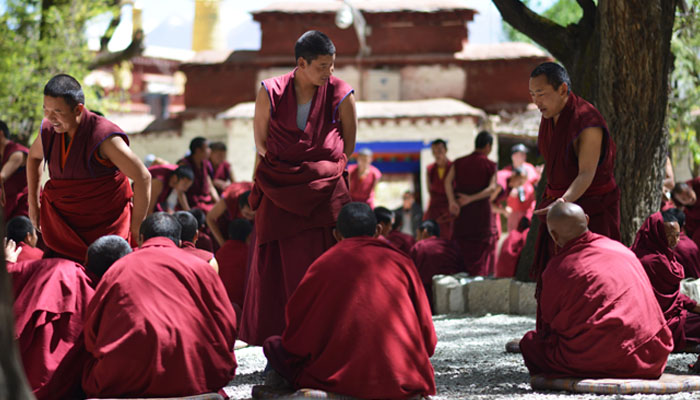 Tibetan Lamas dressed in red Tibetan robes at Drepung Monastery
Tibetan Lamas dressed in red Tibetan robes at Drepung Monastery7. During Tibetan festivals, locals wear more exquisite Tibetan clothing for celebration.
Festival time is when Tibetan people bring out their best clothing. During important times of the year, such as Tibetan New Year and the Saga Dawa festival, Tibetan people dress in their most ornate and elaborate clothes. Festival garments, brought out only at important times of the year, are made with luxurious fabrics and show off vibrant patterns and designs.
Chuba robes decorated with auspicious symbols are matched with the best accessories. Women will wear their best jewelry made with silver, turquoise, and other precious stones. Men often choose to add splendor to their outfits with ornate belts and hats. Additionally, colorful scarves and shawls add to the expression of joy and unity in these celebrations.
8. Young Tibetans tend to wear casual clothes or distinctive Tibetan clothing with modern designs.
A growing trend among young Tibetans is blending traditional and modern casual clothing. Young Tibetans often try to find a balance between modern styles and their cultural heritage. It is not uncommon to see some Western-style clothing like jeans and t-shirts. Many people will then creatively accessorize these outfits with traditional elements such as jewelry or scarves, blending together the new and the old.
The classic chuba robe is still everywhere, but Tibetan youth will make stylish adaptations. The cut of the fabric or the embroidered designs will be changed to something more contemporary. These changes show the desire to keep old traditions alive while making innovations to express personal style.
 Young people tend to wear more stylish Tibetan clothing.
Young people tend to wear more stylish Tibetan clothing.9. Tibetan costume photography is a new trend for tourists to experience local culture.
Tibetan people are delighted to share their culture and have visitors participate in local traditions. Tibetan costume photography is an emerging new trend that offers a fun opportunity for tourists to immerse themselves in local culture. Cultural centers and local vendors give tourists the chance to dress up in authentic Tibetan clothing and have professional-level photos taken to create mementos of the experience.
The costumes include chuba robes, beautiful jewelry, colorful headdresses, and all the intricate accessories that Tibetan people wear during festivals. It is a fun way to connect with the local culture and create personal souvenirs of your time there.
Conclusion
The way people dress in Tibet is an expression of the vibrant and ancient culture of the region. It is a part of the rich tapestry of living traditions that make Tibet such a fascinating destination for tourists. With the chance to both see and participate in Tibetan dressing culture, you’ll be able to see part of the creative and adaptable spirit of the local people. To learn more about it firsthand, contact us to start planning your Tibet tour.
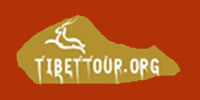
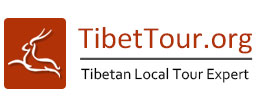


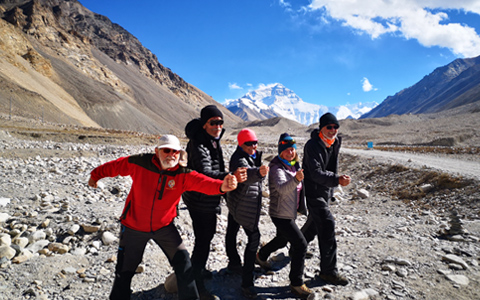

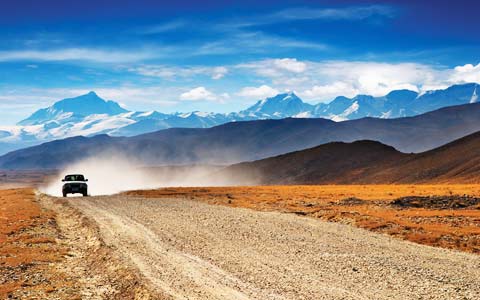

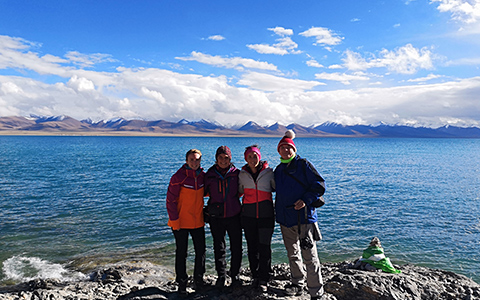
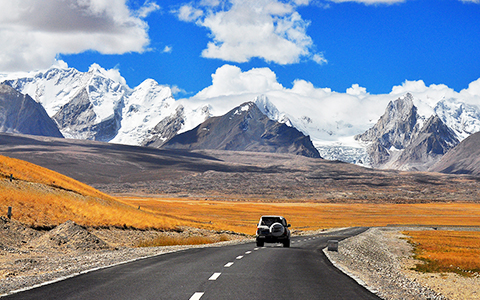







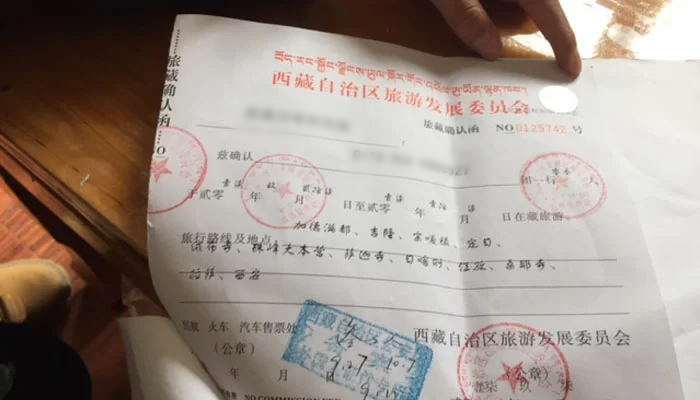
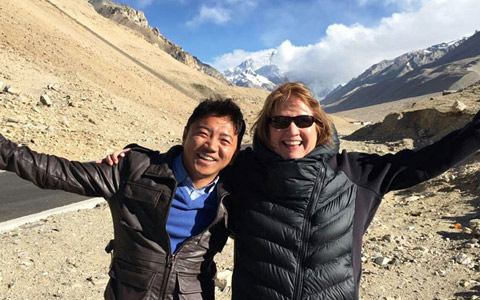







 Our clients wear traditional Tibetan dress for photography.
Our clients wear traditional Tibetan dress for photography.  Tibetan clothing is made to be warm and durable in farming areas.
Tibetan clothing is made to be warm and durable in farming areas. Tibetan clothing for women varies in ages.
Tibetan clothing for women varies in ages. Tibetan Lamas dressed in red Tibetan robes at Drepung Monastery
Tibetan Lamas dressed in red Tibetan robes at Drepung Monastery
 Young people tend to wear more stylish Tibetan clothing.
Young people tend to wear more stylish Tibetan clothing.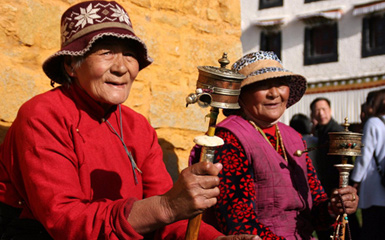










Ask a Quick Question